Safety
Age Appropriate
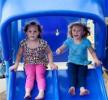
Not all play equipment is age appropriate for all children who use a playground. Playgrounds should be designed for three age categories, toddlers, pre-school, and school age, to provide age appropriate playground equipment.
Arsenic
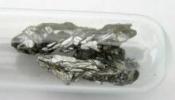
One of the main ingredients in a wood preservative called chromated cooper arsenate is arsenic. Children are exposed to arsenic in the environment from food, soil, water, and air as well as older wooden playground equipment.
Bone Fractures
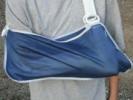
Two-thirds of all injuries on playgrounds involve bone fractures. Nearly all of these fractures (90%) involve upper limbs and come from falls from monkey bars or climbing frames.
Certified Playground Safety Inspector

A Certified Playground Safety Inspector has passed the National Recreation and Park Association National Playground Safety Institute's examination. The ASTM International and the U.S. Consumer Product Safety Commission are the safety standards used for this test.
Chemicals and Poisons
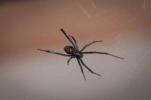
Various hazardous chemicals and poisons can sometimes be found in a playground environment. These chemicals and poisons are the result of treatments applied to play equipment or living organisms that affect playground areas.
Choking and Strangulation
Choking occurs when children cannot breathe normally because their airway is obstructed. Good playground maintenance can help avoid the dangers of choking and strangulation.
Completely Bounded Opening
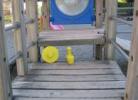
The definition of a completely bounded opening is any opening in a piece of play equipment that is totally enclosed by boundaries on all sides so that the perimeter of the opening is continuous.
Critical Height

The maximum fall height from which a life threatening head injury would not be expect to occur is defined as critical height. ASTM F1292 uses critical height to assess impact attenuation of playground surfacing. The testing for critical height is typically done in a laboratory, however, testing may also be done in the field using the F1292 testing methodology.
Crush and Shear

Crush or shear hazards could cause the user to have the following injuries: "contusion, laceration, abrasion, amputation or fracture during the use of playground equipment." Crush and shear hazards are points found in places where parts move against each other or a fixed part.
Designated Play Surface
As defined by the U.S. Consumer Product Safety Commission, a designated play surface is any elevated surface greater than 2 inches by 2 inches that a child might access and attempt to play on. Guardrails, handrails, and posts pose a potential hazard if a child should fall from a greater height than the playground surfacing is designed to protect.
Drawstrings
Drawstrings, particularly on hoods and necks of children's clothing, can become entangled on playground equipment and cause death by strangulation. The U.S. Consumer Product Safety Commission has been very active in bringing this hazard to the attention of consumers and to the clothing industry.
Entanglement
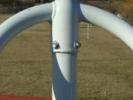
The condition in which the user's clothing or something around the user's neck becomes caught or entwined on a component of playground equipment is called entanglement. The causes of entanglement include projections, protrusions, and open hooks, such as "S" hooks and gaps, that could entrap a child's clothing.
Entrapment
Entrapment is defined as "any condition which impedes withdrawal of a body or a body part that has penetrated an opening." Many types of gaps can be found on playground equipment that could result in some type of entrapment.
Equipment Height
Playground designers view equipment height as an important factor in making playground equipment interesting and challenging. The proper equipment height is considered for safety as well.
Fall Height
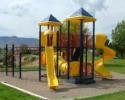
Fall height is a measurement defined as the vertical distance between a designated play surface and the protective surfacing beneath it. The fall height of the equipment should not exceed the critical height of the surface in the design of playgrounds and the type and depth of surfacing used under the equipment.
Head Injury Criteria

Head Injury Criteria is a measurement of the time duration of head deceleration during impact. A mathematical formula is used to derive a value known as Head Injury Criteria or HIC. The value of HIC with regard to the impact on a playground surface may not be more than 1000.
Hidden Dangers on the Playground
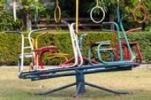
Playgrounds are intended to be fun, safe places to take children to visit and play. The National Playground Safety Institute (NPSI), a program developed under the National Recreation and Park Association (NRPA), identified twelve of the leading causes of injury on playgrounds known as "The Dirty Dozen."
Impact Attenuation
Impact attenuation of playground surfacing material is the measure of its shock absorbing properties. The shock absorbing properties are measured by dropping an instrumented metal headform onto the surface and recording the force of impact and the time of deceleration.
Inspection Gauges and Tools
Playground inspectors use a wide array of gauges and tools in their inspections to be sure playgrounds meet the safety specifications detailed in the appropriate ASTM International Standards and the U.S. Consumer Product Safety Commission Public Playground Safety Handbook. Inspectors learn what the tools are and how to use them when taking the Certified Playground Safety Inspector training sponsored by the National Recreation and Park Association.
Lead Hazards

Lead has been identified as a potential health hazard found in both children's playgrounds and in artificial turf. The effects of lead ingestion or inhaling are cumulative. Although deteriorating lead paint in homes is the main source of lead poisoning for children under six, coming in contact with older playground equipment with lead paint has been an additional source of concern.
Mold
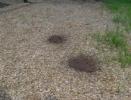
Mold can frequently be found on playgrounds with wood surfaces and in wood mulch. The mold that most commonly grows on wood playground surfaces is called a slime mold. This mold is irregular in shape and grows in various colors such as brown, yellow, pink, or white. Slime molds are a temporary nuisance and are generally confined to small areas.
Non-rigid Components
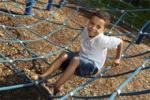
A non-rigid or "flexible" component is defined by ASTM F 1487 as: "...any part of the playground equipment, excluding swings, that temporarily changes its shape when in use; examples include the tire net, the cargo net, and the log bridge." Non-rigid components are used to develop balance and coordination.
Protective Barrier
A Protective Barrier on a playground structure is defined as "An enclosing device around an elevated surface that prevents both inadvertent and deliberate attempts to pass through the device." Protective barriers are required to protect children from jumping or falling from elevated surfaces.
Protrusion
A protrusion on playground equipment is a projection that has the potential to cause bodily injury to a user who comes in contact with it. Protrusions are not allowed to be on playground equipment. A Certified Playground Safety Inspector (CPSI) uses his projection gauges to determine whether projections are protrusions.
S.A.F.E.

The National Program for Playground Safety (NPPS) was created in October of 1995 to help communities across the nation examine the critical issues surrounding playground safety. S.A.F.E. is an acronym created by NPPS and used in its National Action Plan to help the public create safe play environments for children.
Shock Absorbing
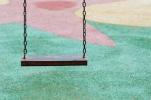
In the context of playgrounds, "shock absorbing" refers to the properties of the protective surface that assist in preventing or minimizing injuries. Shock absorbing is also referred to as "impact attenuating" as it relates to playground surfacing.
Signs and Labels

Signs and Labels on and around playground equipment provide safety information on playgrounds. Some signs are for information, some are for warning, and some are for user education. Signs should be placed at the entrance to the play area or in a conspicuous location on the equipment. Freestanding signs must be near the play equipment entrance but outside of the use zone.
Slyde the Playground Hound

Slyde the Playground Hound is a character created by Curtis Stoddard to teach playground safety awareness to children ages 2-12 years of age. As a playground contractor, Curtis observed that, for all the strides the playground industry had made for manufacturing and installing playgrounds that are safe, there was still a lack of understanding about the inherent dangers of playgrounds by the users- children.
Suspended Hazards
A suspended hazard is a non-rigid component such as a cable, wire or unattached swing chain that is suspended between play structures or from the ground to the play structure that is within 45 degrees of horizontal, unless it is above 84 inches and is a minimum of 1" wide at its widest point.
Swing Safety
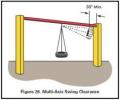
Swing safety is a very complex issue. There are three different types of swings, placement requirements, use zone requirements, requirements for the type of fasteners and suspending elements, and surfacing requirements that must all be taken into consideration.
The Dirty Dozen

The National Recreation and Park Association (NRPA) is committed to promoting safe play environments for children. When the National Playground Safety Institute (NSPI) was formed as part of NRPA, the NPSI Board of Directors along with their instructors prioritized a list of what they considered to be the top twelve safety issues that result in playground injuries.
Triax 2000

The Triax 2000 Surface Impact Tester (SIT) is a portable, free-fall playground surface impact tester. Children falling from playground equipment account for 79% of all playground equipment related injuries each year. The Triax 2000 is used to assess the safety of the surfacing below the playground equipment based on the height of the equipment.

